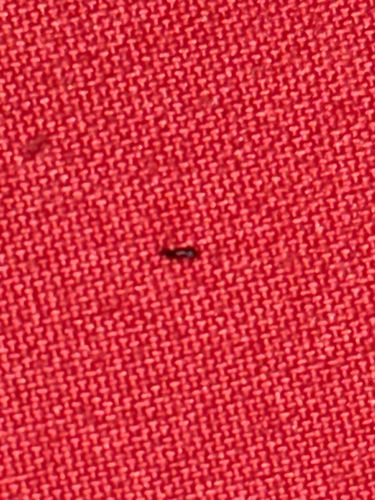Ant
Scientific Name: Formicidae (general family name due to lack of specific distinguishing features)
Order & Family: Order Hymenoptera, Family Formicidae
Size: Ants vary greatly in size, from less than 1 mm to several centimeters depending on the species. Given the blurry image, it's hard to be precise, but this appears to be a small ant, likely in the 1-5 mm range.

Natural Habitat
Ants can be found in nearly every terrestrial habitat on Earth, including forests, deserts, urban environments, and homes. They build nests in soil, wood, under rocks, or in cavities.
Diet & Feeding
Ants are omnivores, consuming a wide range of foods including sugary substances (nectar, honeydew), proteins (other insects, dead animals), seeds, and fungi.
Behavior Patterns
The image is too blurry and the insect too small to accurately determine specific behavior patterns. Typically, ants are social insects living in colonies, foraging for food, and maintaining their nest. Their behavior is largely driven by colony needs, with different castes performing specific tasks.
Risks & Benefits
Potential Risks: Some species can be considered nuisance pests in homes, contaminate food, or cause structural damage (like carpenter ants). Certain species have painful stings or bites (e.g., fire ants). Potential Benefits: Ants play important ecological roles as predators of other insects, seed dispersers, soil aerators, and decomposers.
Identified on: 9/4/2025